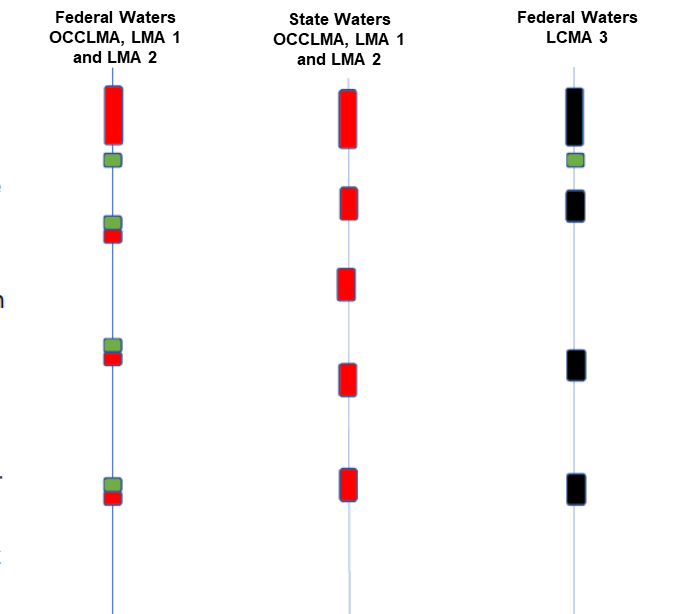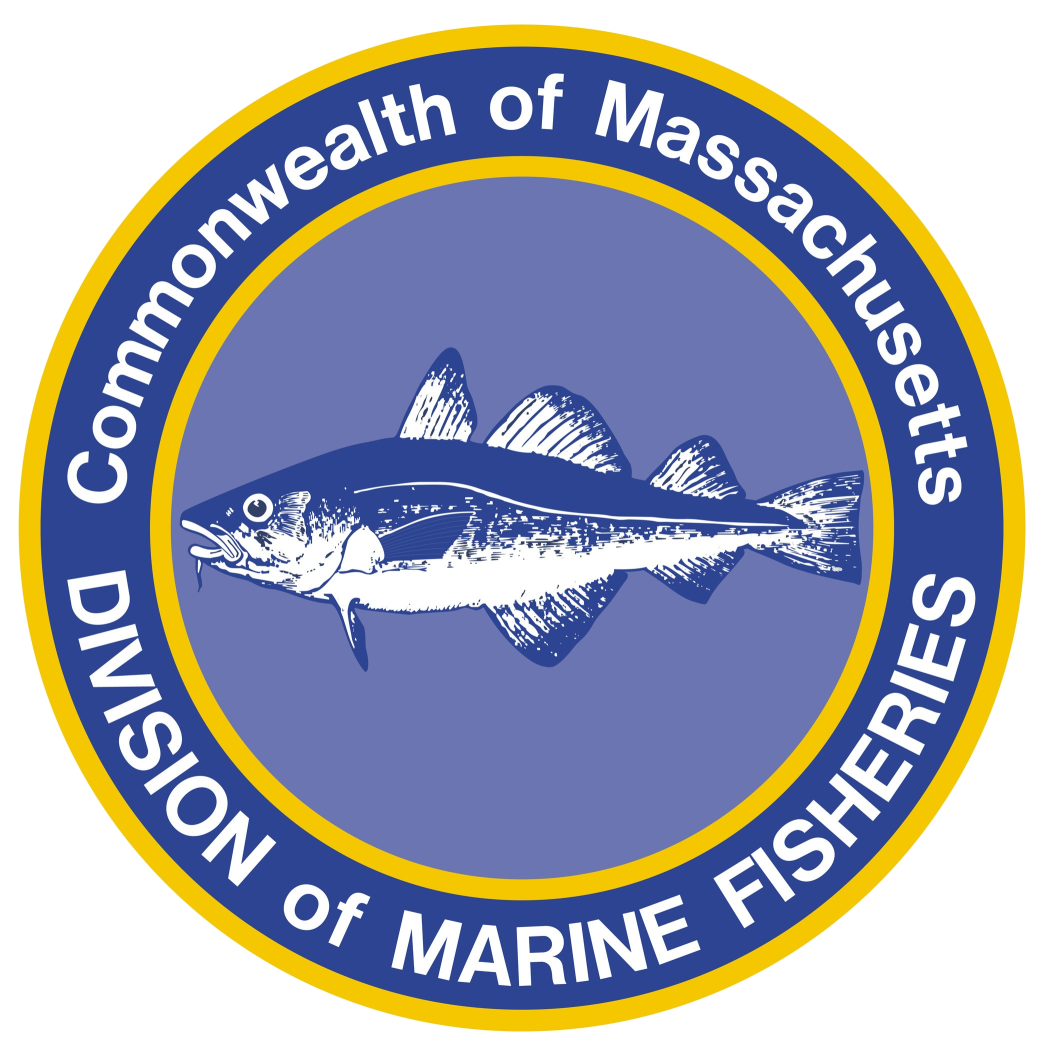- Division of Marine Fisheries

During the period of July 1, 2021 through December 31, 2021 the following regulatory changes were enacted by DMF after public hearings and Marine Fisheries Advisory Commission approval, or by the Director under his declaratory and emergency authorities.
Buoy Line Marking Rules (322 CMR 4.13). DMF adopted new buoy line marking rules affecting the state’s commercial lobster and crab trap fishermen. These rules become effective on February 1, 2022. For state waters, the buoy lines are to be marked with one solid red mark of at least three feet in length in the first two fathoms (12 feet) of the buoy line extending down from the buoy (“surface system mark”). Then following the surface system mark, there are to be at least four solid or non-solid red marks measuring at least two feet in length throughout the remainder of the buoy line (“body of the buoy line”). Two of these marks are to occur in the top 50% of the body of the buoy line, two are to occur in the bottom 50% of the body of the buoy line, and there shall not be a length of buoy line greater than 60 feet without such a red mark.
For federal waters, the surface system is to be marked with one solid red mark of at least three feet in the surface system followed by a one-foot solid green mark no more than one foot below the three-foot solid red mark. Then there is to be at least one mark of at least two feet in length in each third of the body of the buoy line. Each mark is to consist of a solid or non-solid red mark measuring at least one foot in length and a solid or non-solid green mark measuring at least one foot in length. Within the body of the buoy line the red and green marks need not be adjacent but are not to be more than six inches apart.
A solid mark refers to a mark of uniform color throughout the length of marking (e.g., tape or paint). A non-solid mark refers to marking that may be woven into the buoy line (e.g., tracer). Legal contrivances designed to have the buoy line break at 1,700 pounds of tension (e.g., South shore sleeves or splices of red weak rope) may be used as a red mark within the body of the buoy line.
DMF engaged in ongoing rule making to (1) extend these gear marking requirements to all trap gear fisheries; and (2) to modify the regulations to prevent gear being fished in state or federal waters as being wrongly misattributed to the other jurisdiction and if adopted these changes would go into effect immediately.
In-Season Adjustments to Commercial Black Sea Bass Limits for 2021 (322 CMR 6.28). On August 30, 2021, DMF enacted in-season adjustments to the commercial black sea bass limits for the remainder of the 2021 calendar year. This action added Mondays and Wednesdays as open fishing days in the directed black sea bass pot and hook and line fisheries, resulting in an open fishing day schedule of Sunday–Thursday, with a scheduled increase to also add Fridays and Saturdays on October 1. Additionally, the trip limits for the directed black sea bass pot and hook and line fisheries were increased by 25%, resulting in the pot limit being increased from 400 pounds to 500 pounds and the hook and line limit being increased from 200 pounds to 250 pounds.
In-Season Adjustments to Period II Commercial Summer Flounder Limits for 2021 (322 CMR 6.22). On September 26, 2021, DMF enacted in-season adjustments to the commercial summer flounder limits for the remainder of the 2021 fishing season. This action added Fridays and Saturdays as open fishing days, thus allowing commercial fishing to occur seven days per week. Additionally, the trip limits were increased to 800 pounds for all gear types effective September 26, with a scheduled increase to 2,000 pounds effective October 10. Without these adjustments, the limits would have been 400 pounds for net fishermen and 250 pounds for hook and line fishermen through the end of October and 1,000 pounds for all gear types during November–December.
Recreational Catch Limits for Gulf of Maine Cod and Haddock (322 CMR 6.03). On August 18, 2021 NOAA Fisheries finalized its recreational fishing limits for Gulf of Maine cod and haddock during the 2021 Fishing Year (May 1, 2021–April 30, 2022). State regulations conformed to these final federal recreational fishing limits with one exception: a September 8–October 7 for-hire season for Gulf of Maine cod allowing a one-fish per angler bag limit and 21-inch minimum size. To ensure state rules complemented the final federal regulations, DMF conditioned all 2021 recreational for-hire permits to provide the same allowance.
Winter II Scup Limit (322 CMR 6.27). The 2021 Winter II (October 1–December 31) commercial scup possession and landing limit was set at 21,000 pounds. This matches the federal limit set for this period by NOAA Fisheries and thereby allows vessels fishing offshore to possess and land scup lawfully caught in the federal zone in Massachusetts.
